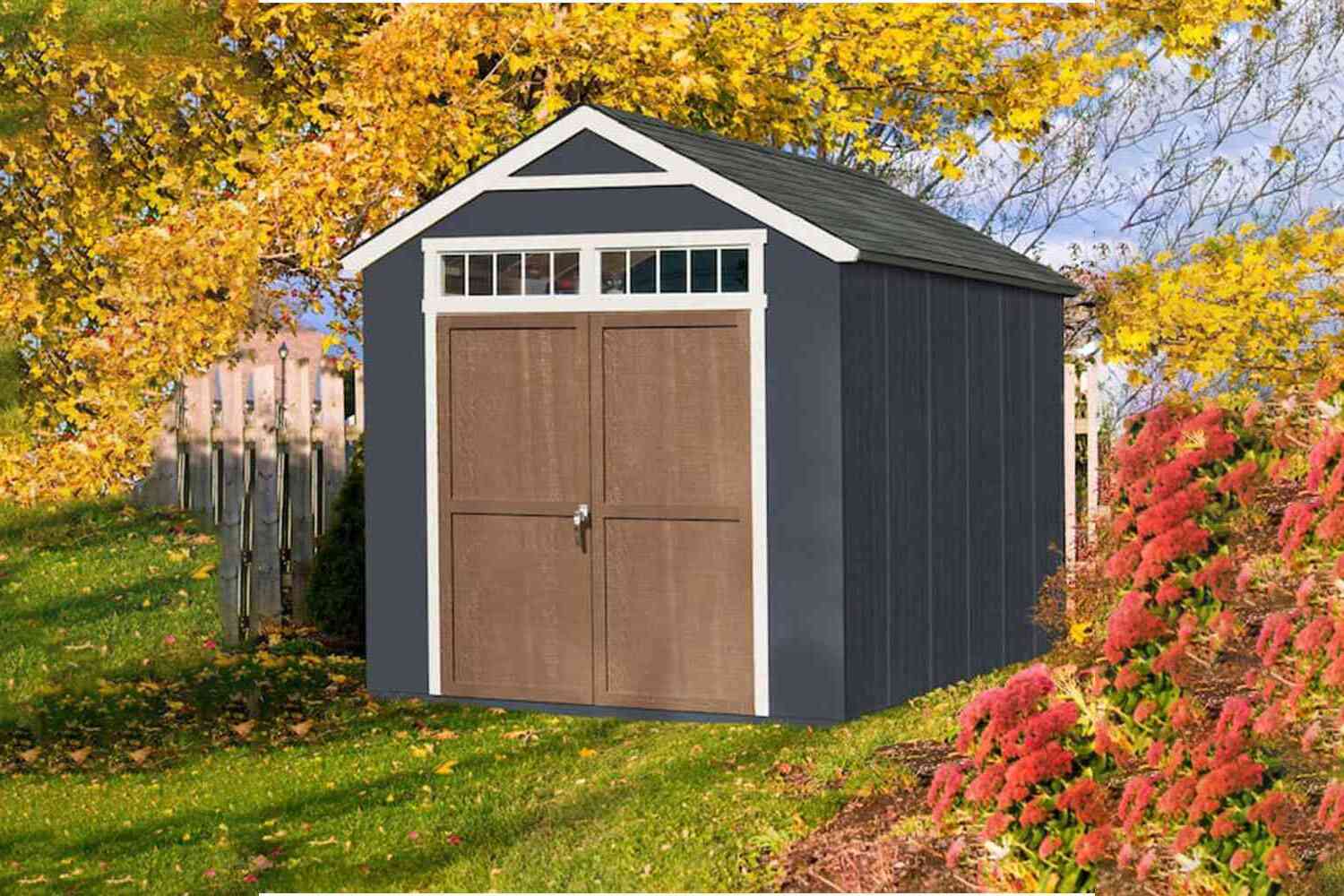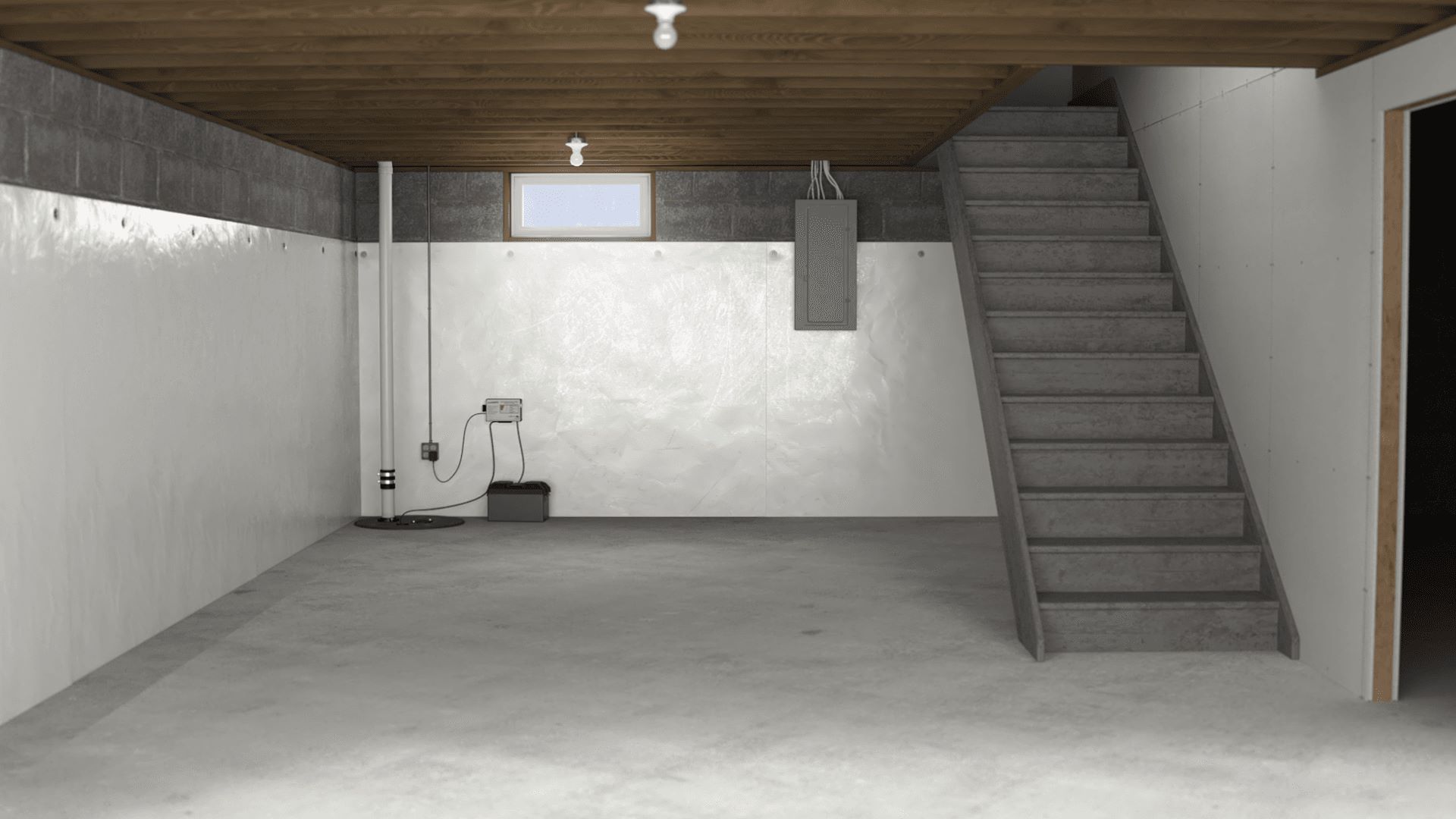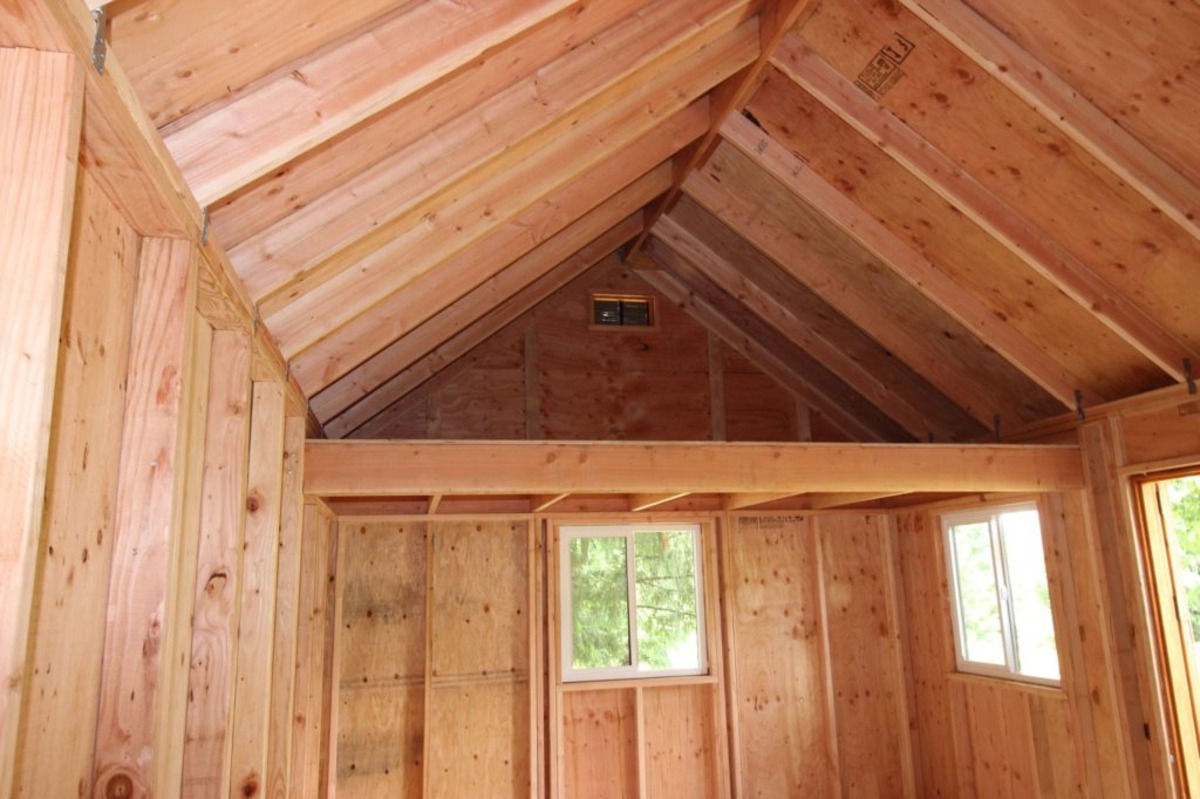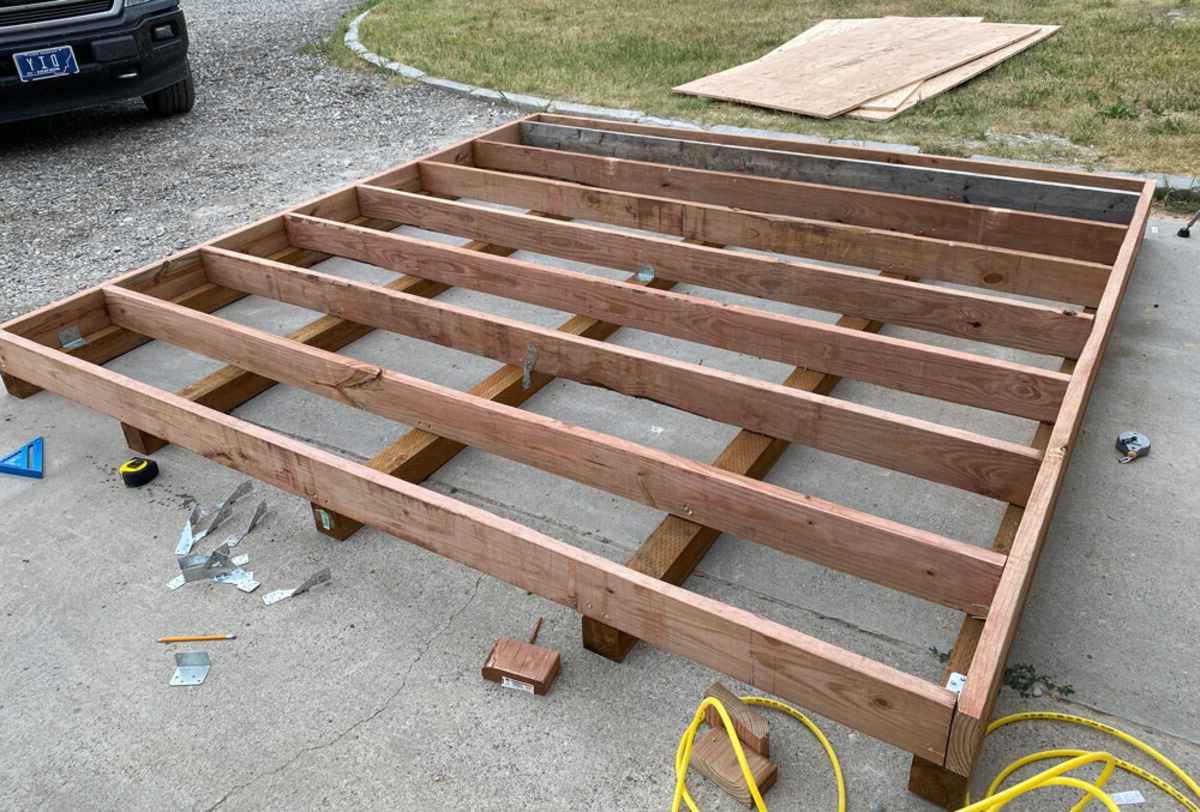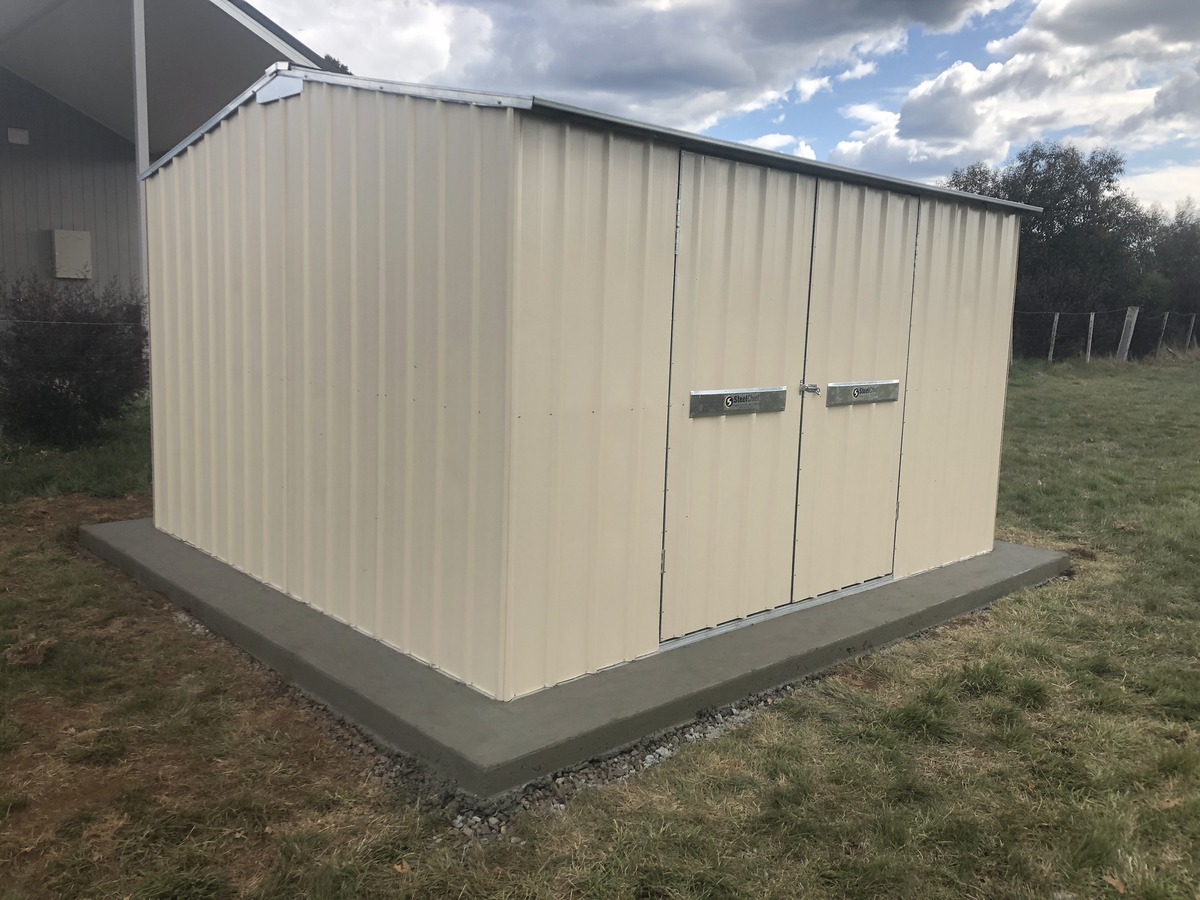Home>Home & Furniture>Garage & Basement>How To Build Shed Foundation
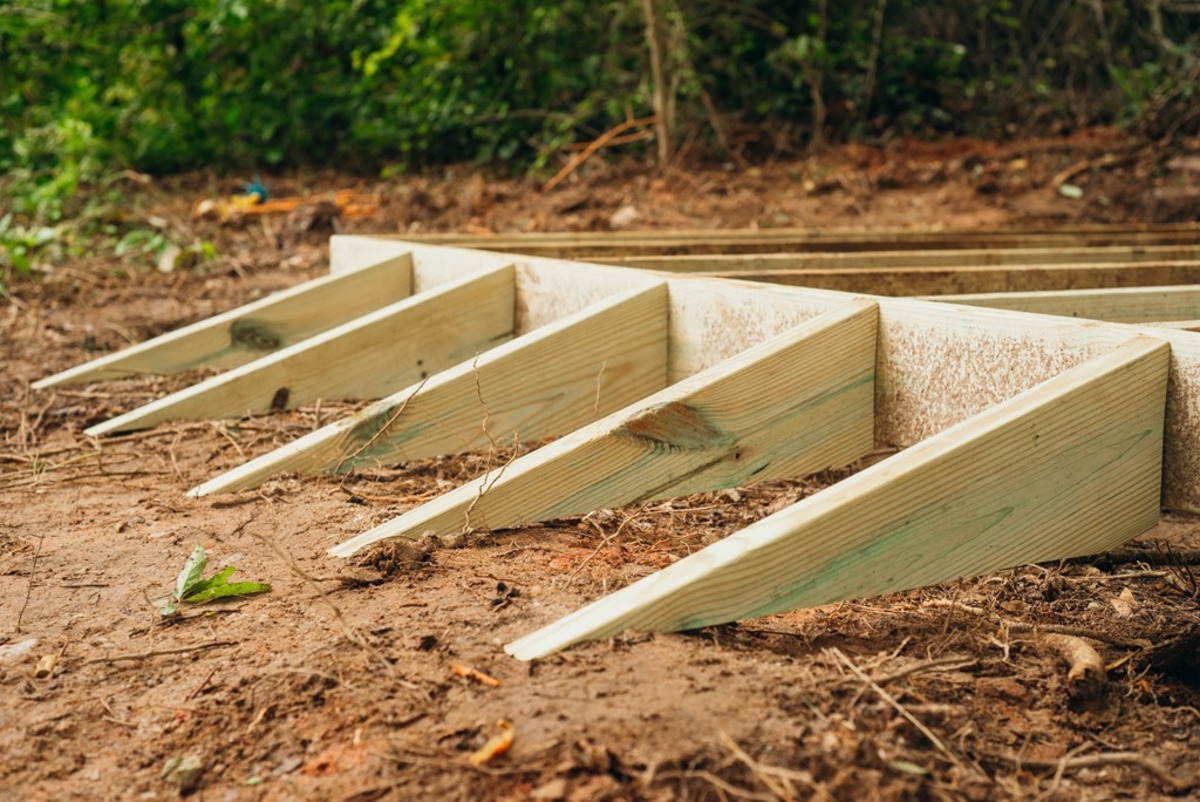

Garage & Basement
How To Build Shed Foundation
Published: February 20, 2024
Editor-in-Chief with a decade in home renovation and a passion for vintage furniture. Diane is known for her weekend treasure hunts at flea markets, enriching our content with unique style insights.
Learn how to build a solid foundation for your garage or basement with our step-by-step guide. Ensure stability and durability for your structure.
(Many of the links in this article redirect to a specific reviewed product. Your purchase of these products through affiliate links helps to generate commission for Twigandthistle.com, at no extra cost. Learn more)
Introduction
Building a shed foundation is a crucial step in the construction process, as it provides the stability and support necessary for the structure to withstand various environmental factors. Whether you're planning to use your shed for storage, as a workshop, or even as a cozy retreat, a solid foundation is essential to ensure its longevity and structural integrity.
The foundation serves as the base upon which the entire shed will rest, making it imperative to approach this initial phase with careful consideration and attention to detail. By taking the time to establish a sturdy and level foundation, you can prevent potential issues such as uneven settling, water damage, and structural instability, ultimately saving time and resources in the long run.
In this comprehensive guide, we will walk you through the step-by-step process of building a shed foundation, covering everything from selecting the ideal location to the final inspection. Whether you're a seasoned DIY enthusiast or a first-time builder, this guide will equip you with the knowledge and confidence to tackle this essential aspect of shed construction.
With a solid foundation in place, you can proceed with the rest of the shed construction process, knowing that your structure is well-supported and built to last. So, let's dive into the details of creating a reliable and durable shed foundation that will serve as the cornerstone of your outdoor space.
Read more: Sloped Shed Foundation: A DIY Guide
Step 1: Choosing the Right Location
Selecting the optimal location for your shed is the first and most crucial step in the foundation-building process. The chosen site will significantly impact the shed's stability, longevity, and functionality. Here's a detailed breakdown of the factors to consider when choosing the right location for your shed foundation:
Consider Ground Stability
Assess the ground stability of potential locations. Look for areas with firm, well-drained soil to prevent issues such as sinking or shifting over time. Avoid low-lying areas that are prone to pooling water, as this can lead to moisture-related problems and compromise the foundation's integrity.
Accessibility
Evaluate the accessibility of the chosen location. Ensure that it is easily reachable for construction purposes and future use. Accessibility is particularly important if you plan to store heavy equipment or materials in the shed, as it will impact the ease of transportation and maneuverability.
Sunlight and Ventilation
Take into account the shed's exposure to sunlight and ventilation. Position the shed in a way that maximizes natural light and airflow, which can help prevent moisture buildup and create a more comfortable environment inside the shed.
Local Building Codes
Check local building codes and regulations regarding shed placement. Some areas have specific requirements regarding setbacks from property lines, neighboring structures, and easements. Adhering to these regulations is essential to avoid potential legal issues and ensure compliance with local ordinances.
Future Land Use
Consider the future use of the surrounding land. Anticipate any potential changes in landscaping or property development that could affect the shed's location. Planning for future land use can help prevent the need for relocating the shed down the line.
By carefully considering these factors, you can confidently choose the right location for your shed foundation, setting the stage for a successful and durable construction project. Once the ideal location is identified, you can proceed to the next steps of clearing and preparing the ground for the foundation.
Step 2: Clearing and Leveling the Ground
Before laying the foundation for your shed, it's essential to prepare the ground by clearing away any debris and ensuring a level surface. This crucial step sets the groundwork for a stable and structurally sound foundation. Here's a detailed guide on how to effectively clear and level the ground for your shed project.
Clearing Debris
Begin by removing any vegetation, rocks, roots, and other debris from the chosen site. Use a rake, shovel, or a small excavator to clear the area thoroughly. It's important to create a clean and debris-free space to prevent any unevenness or obstructions that could impact the foundation's stability.
Read more: How to Build a DIY Garage Foundation
Assessing the Ground
After clearing the surface, assess the ground for any unevenness or slopes. Use a long, straight board or a level to identify high and low spots. This step is crucial for ensuring that the shed foundation will rest on a level surface, minimizing the risk of structural issues in the future.
Leveling the Ground
To level the ground, you can use various tools such as a shovel, rake, tamper, or a compacting machine, depending on the size of the area and the extent of unevenness. Gradually fill in low-lying areas with compacted soil, while removing excess soil from high spots to achieve a uniform and level surface.
Consider Drainage
During the leveling process, pay attention to the ground's natural drainage patterns. Ensure that the site is graded in a way that promotes proper water runoff and prevents water from pooling around the shed. Proper drainage is essential for protecting the foundation from water damage and maintaining the overall integrity of the structure.
Final Inspection
Once the ground is cleared and leveled, perform a final inspection to confirm that the site is free of debris and has a uniformly level surface. Take the time to walk around the area and visually inspect for any remaining obstacles or uneven areas that may need further attention.
By meticulously clearing and leveling the ground, you are laying the groundwork for a solid and reliable foundation for your shed. This careful preparation will contribute to the long-term stability and durability of the structure, ensuring that your shed stands the test of time in its new outdoor home.
Step 3: Marking Out the Foundation
Marking out the foundation is a critical phase in the shed construction process, as it establishes the precise boundaries and layout for the foundation components. This step sets the stage for accurate excavation and ensures that the foundation aligns with the shed's intended dimensions. Here's a detailed guide on how to effectively mark out the foundation for your shed project.
Gather Necessary Tools
Before marking out the foundation, gather the essential tools required for this phase. You will need measuring tape, wooden stakes, string or twine, a hammer, and marking paint or chalk. These tools will enable you to create clear and visible markings that guide the subsequent excavation and foundation installation.
Establish Reference Points
Begin by establishing reference points that define the exact dimensions and layout of the shed's foundation. Use the measuring tape to mark the corners and key structural points of the foundation area. Drive wooden stakes into the ground at these points to serve as reference markers for the foundation layout.
Stringing the Perimeter
Once the reference points are in place, use string or twine to connect the wooden stakes and outline the perimeter of the foundation. Pull the string taut between the stakes, ensuring that it follows the precise dimensions and shape of the intended foundation. This step creates a visual guide for excavating the foundation area to the correct specifications.
Marking the Excavation Boundaries
With the perimeter string in place, use marking paint or chalk to clearly define the boundaries of the excavation area. Trace along the string to create visible lines on the ground, indicating the exact area where the soil will be removed to accommodate the foundation components. This step helps maintain accuracy during the excavation process.
Double-Check Measurements
After marking out the foundation, double-check the measurements and alignment to ensure that the layout accurately reflects the shed's dimensions. Verify that the corners are square and that the overall layout matches the intended size and shape of the shed. This attention to detail is crucial for avoiding errors during the excavation and foundation installation stages.
By meticulously marking out the foundation, you are establishing a clear and precise guide for the subsequent construction phases. This careful preparation ensures that the foundation will align with the shed's design and dimensions, setting the stage for a seamless and structurally sound construction process.
Step 4: Digging the Foundation Holes
With the foundation perimeter marked out, the next crucial step in building a shed foundation is excavating the foundation holes. This phase involves digging the holes where the foundation blocks or piers will be placed to support the shed's structure. Properly dug foundation holes are essential for ensuring stability, load-bearing capacity, and overall structural integrity. Here's a detailed guide on how to effectively dig the foundation holes for your shed project.
Gather Necessary Tools
Before commencing the excavation, gather the necessary tools and equipment for digging the foundation holes. Depending on the soil composition and the size of the holes, you may need a shovel, a post hole digger, a clamshell digger, or an auger. Additionally, ensure that you have a level and measuring tape on hand to verify the depth and alignment of the holes.
Read more: How To Build A Shed
Determine Hole Placement and Depth
Refer to the marked foundation layout to determine the precise placement and spacing of the foundation holes. Use the measuring tape and layout markings to identify the locations where the holes will be dug. Additionally, consult the shed's construction plans or specifications to ascertain the recommended depth for the foundation holes based on the type of foundation blocks or piers being used.
Commence Excavation
Begin digging the foundation holes according to the predetermined locations and depth requirements. Use the appropriate digging tool to remove soil and create clean, uniform holes that match the specified dimensions. Take care to maintain the vertical alignment of the holes to ensure that the foundation blocks or piers will sit securely and level once installed.
Check Hole Alignment and Depth
As the excavation progresses, periodically check the alignment and depth of the foundation holes using a level and measuring tape. Verify that the holes are consistent in depth and that their positions align with the marked layout. This meticulous attention to detail during the excavation process is crucial for achieving a stable and accurately positioned foundation.
Remove Excess Soil and Debris
Once the foundation holes reach the required depth and alignment, remove any excess soil and debris from the holes. Clearing out loose soil and debris ensures that the foundation blocks or piers will make direct contact with the solid ground, promoting stability and load-bearing capacity.
Final Inspection
After the foundation holes are dug and cleared, perform a final inspection to confirm that they meet the specified depth and alignment requirements. Double-check the measurements and ensure that the holes are ready for the next phase of installing the foundation blocks or piers.
By meticulously digging the foundation holes, you are laying the groundwork for a stable and robust foundation that will provide essential support for your shed. This careful preparation ensures that the foundation components will be securely anchored, setting the stage for the subsequent phases of the construction process.
Step 5: Adding Gravel and Leveling
Once the foundation holes are excavated, the next critical step in building a shed foundation involves adding gravel and ensuring a level base for the foundation blocks or piers. This phase plays a pivotal role in providing a stable and well-drained foundation that can withstand the weight of the shed and resist ground moisture. Here's a detailed guide on how to effectively add gravel and achieve proper leveling for your shed project.
Selecting the Right Gravel
Before adding gravel to the foundation holes, it's essential to choose the appropriate type of gravel for the project. Opt for clean, angular gravel that is free from fine particles and debris. The use of compactable gravel, such as crushed stone or crushed rock, is recommended to create a solid and load-bearing base for the foundation.
Adding Gravel to the Holes
Begin by adding a layer of gravel to the bottom of each foundation hole. Use a shovel or wheelbarrow to carefully distribute the gravel, ensuring that it covers the entire base of the hole. The layer of gravel serves as a stable and well-drained foundation for the subsequent placement of the foundation blocks or piers.
Read more: How To Build A Portable Shed
Achieving Proper Compaction
After adding the initial layer of gravel, use a hand tamper or a mechanical compactor to achieve proper compaction. Compact the gravel layer thoroughly to create a firm and stable base that can support the weight of the shed. Proper compaction is essential for preventing settling and ensuring the long-term stability of the foundation.
Checking for Level
Once the gravel is compacted, use a level to verify that the surface of the gravel in each hole is uniformly level. Adjust the gravel as needed to achieve a consistent level across all the foundation holes. This meticulous attention to leveling is crucial for ensuring that the foundation blocks or piers will sit securely and evenly once installed.
Adding Additional Gravel as Needed
If any discrepancies in the level are identified, add or remove gravel as necessary to achieve a uniform and level base for the foundation. Take the time to recheck the level after making adjustments, ensuring that the gravel surface meets the required specifications for the shed's foundation.
Final Inspection
After adding gravel and achieving proper leveling, perform a final inspection to confirm that each foundation hole has a uniformly level and compacted gravel base. Double-check the alignment and levelness of the gravel surfaces to ensure that they are ready to receive the foundation blocks or piers.
By meticulously adding gravel and achieving proper leveling, you are establishing a solid and well-drained foundation that will provide essential support for your shed. This careful preparation ensures that the foundation will be stable and resilient, setting the stage for the subsequent installation of the foundation blocks or piers.
Read more: How to Build a DIY Kitchen Sink Base
Step 6: Installing the Foundation Blocks
With the ground meticulously prepared and the foundation holes excavated, the next pivotal step in building a shed foundation involves the precise installation of foundation blocks. These blocks serve as the primary support for the shed structure, distributing its weight evenly and ensuring stability. Here's a detailed guide on how to effectively install the foundation blocks for your shed project.
Gather Necessary Materials and Tools
Before commencing the installation, gather the necessary materials and tools required for placing the foundation blocks. You will need high-quality concrete or solid concrete blocks designed for foundational support. Additionally, ensure that you have a level, measuring tape, and a rubber mallet or hammer on hand to facilitate the installation process.
Positioning the Foundation Blocks
Carefully place the foundation blocks into the prepared holes, ensuring that they sit securely on the compacted gravel base. Position the blocks according to the predetermined layout and spacing, aligning them with the marked boundaries of the foundation holes. Take care to maintain uniform spacing and alignment to ensure the structural integrity of the foundation.
Checking for Level and Alignment
After positioning each foundation block, use a level to verify that it is perfectly level in all directions. Adjust the position of the blocks as needed, tapping them gently with a rubber mallet or hammer to achieve the desired levelness. Ensuring that the blocks are precisely level is crucial for the overall stability and load-bearing capacity of the shed foundation.
Read more: How To Build A Shed Floor
Verifying Uniform Height
In addition to checking for levelness, verify that the installed foundation blocks are uniformly aligned in terms of height. Use a measuring tape to confirm that the blocks are at the same height relative to the ground surface. Consistent block height is essential for ensuring that the shed's weight is evenly distributed and that the structure rests securely on the foundation.
Securing the Blocks in Place
Once the foundation blocks are positioned, level, and aligned, secure them in place by gently tamping the surrounding soil to fill any gaps and provide additional support. Take care to avoid excessive force that could disrupt the levelness of the blocks. The goal is to create a stable and secure foundation that can withstand the load and environmental factors.
Final Inspection and Adjustment
After installing the foundation blocks, perform a final inspection to ensure that they meet the specified levelness, alignment, and height requirements. Double-check the placement of each block and make any necessary adjustments to achieve a uniform and stable foundation base for the shed.
By meticulously installing the foundation blocks, you are establishing a solid and reliable support system for your shed, setting the stage for the subsequent phases of the construction process. This careful preparation ensures that the shed will rest securely on a stable foundation, ready to fulfill its intended purpose for years to come.
Step 7: Checking for Level
Ensuring that the shed foundation is perfectly level is a critical step that directly impacts the structural integrity and stability of the entire shed. A level foundation not only provides a solid base for the shed but also helps distribute the weight of the structure evenly, minimizing the risk of structural issues and ensuring long-term durability.
To begin the process of checking for level, it's essential to have a reliable and accurate leveling tool on hand. A spirit level, also known as a bubble level, is commonly used for this purpose due to its precision in indicating horizontal and vertical alignment. Additionally, a long, straight board or a laser level can be employed to assess larger areas for levelness.
The process of checking for level involves placing the leveling tool on various points across the foundation to assess the evenness of the surface. Starting from one corner of the foundation, the level is positioned horizontally and then vertically to determine if the surface is perfectly level in both directions. This process is repeated at multiple locations, including the center and other corners of the foundation, to ensure comprehensive levelness assessment.
During the level checking process, any discrepancies in the foundation's levelness are carefully noted. If the foundation is found to be uneven at any point, adjustments are made to rectify the issue. This may involve adding or removing gravel, repositioning foundation blocks, or using shims to achieve the desired levelness.
In addition to horizontal levelness, vertical alignment is also crucial, especially when using foundation blocks or piers. Ensuring that the blocks are perfectly plumb, or vertically aligned, is essential for the stability and load-bearing capacity of the foundation. This is achieved by using the level to assess the vertical alignment of each block and making adjustments as necessary.
The meticulous process of checking for level ensures that the shed foundation meets the necessary specifications for stability and structural integrity. By achieving a perfectly level foundation, the risk of issues such as uneven settling, structural stress, and water drainage problems is significantly minimized, setting the stage for a successful and long-lasting shed construction project.
Read more: How To Build Large Shed
Conclusion
In conclusion, the process of building a shed foundation is a fundamental aspect of shed construction that demands careful planning, meticulous preparation, and precise execution. By following the step-by-step guide outlined in this comprehensive resource, you have gained valuable insights into the critical stages of creating a solid and reliable foundation for your shed.
From the initial task of selecting the right location to the final inspection for levelness, each step plays a crucial role in ensuring the stability, durability, and functionality of the shed foundation. The careful consideration of ground stability, accessibility, sunlight exposure, and local building codes when choosing the location sets the stage for a foundation that can withstand various environmental factors and serve its intended purpose effectively.
The meticulous process of clearing and leveling the ground not only creates a clean and debris-free space but also establishes a level surface that forms the basis for a stable foundation. Marking out the foundation, digging the foundation holes, and adding gravel with proper leveling contribute to the precise preparation necessary for the subsequent installation of foundation blocks or piers.
The installation of foundation blocks represents a pivotal phase where the primary support for the shed structure is securely positioned, ensuring even weight distribution and structural stability. The critical step of checking for levelness serves as the final assurance that the foundation meets the necessary specifications for long-term durability and performance.
By meticulously following each step and paying attention to detail throughout the process, you have laid the groundwork for a shed foundation that is not only structurally sound but also capable of withstanding the test of time. The solid foundation you have created will serve as the cornerstone of your shed, providing the stability and support necessary for its intended use, whether as a storage space, workshop, or recreational retreat.
As you proceed with the remaining phases of shed construction, you can do so with the confidence that your shed is well-supported by a meticulously crafted foundation. With the foundation in place, you are one step closer to realizing your vision of a functional and enduring outdoor space that enhances your property and meets your specific needs.
In essence, the process of building a shed foundation is a testament to the importance of careful planning, attention to detail, and the pursuit of structural excellence. With the knowledge and insights gained from this guide, you are well-equipped to embark on the journey of constructing a shed that stands firmly on a foundation built to last.

